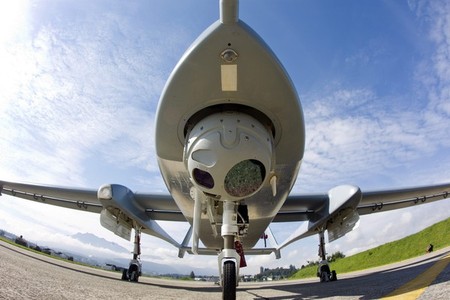Debating America's drone war.

Joshua Foust makes some good points pushing back against the Living Under Drones report, noting that the methodology was designed to produce a somewhat skewed report:
For starters, the sample size of the study is 130 people. In a country of 175 million, that is just not representative. 130 respondents isn't representative even of the 800,000 or so people in the Federally Administered Tribal Areas (FATA), the region of Pakistan where most drone strikes occur. Moreover, according to the report's methodology section, there is no indication of how many respondents were actual victims of drone strikes, since among those 130 they also interviewed "current and former Pakistani government officials, representatives from five major Pakistani political parties, subject matter experts, lawyers, medical professionals, development and humanitarian workers, members of civil society, academics, and journalists."The authors did not conduct interviews in the FATA, but Islamabad, Rawalpindi, Lahore, and Peshawar. The direct victims they interviewed were contacted initially by the non-profit advocacy group Foundation for Fundamental Rights, which is not a neutral observer (their explicit mission is to end the use of drones in Pakistan).
Foust also asks an important question: if not drones, what? When the Pakistani army attempted to clear militants from the FATA, it resulted in massive destruction and tens of thousands of refugees - far worse than the toll inflicted by U.S. drones.
But does this mean the drone program, in its current form, is the "only" choice? Foust thinks so:
The targets of drone strikes in Pakistan sponsor insurgents in the region that kill U.S. soldiers and destabilize the Pakistani state (that is why Pakistani officials demand greater control over targeting). They cannot simply be left alone to continue such violent attacks. And given the Pakistani government's reluctance either to grant the FATA the political inclusion necessary for normal governance or to establish an effective police force (right now it has neither), there is no writ of the state to impose order and establish the rule of law.
But here's the thing: how many drone strikes are targeting international terrorists (i.e. those training or plotting to hit U.S. and Western targets abroad) and how many are hitting local insurgents who are fighting the U.S. because it's decamped in Afghanistan?
This seems like a critical distinction (although these two militant groups likely collaborate) because one group poses an enduring threat to the United States and the other ceases to be an American problem once Washington abandons its flailing nation building effort in Afghanistan. From publicly available information, it's not always clear which of these groups is being targeted. The tempo of the drone strikes suggests that it's less about hitting international terrorists and more about extending the Afghan war into the Pakistani sanctuaries that are out of reach of U.S. troops.
That leads to a second, far more important, question: is the U.S. targetting militants that threaten the Pakistani state, or those sponsored by the Pakistani state. It's rather perverse to argue that drones are critical to protect Pakistan from militant violence when that country's intelligence service believes it is at war with you and uses militants to advance its own interests.
Underlying these questions is a somewhat understandable/somewhat troubling lack of clarity (and outright falsehoods) from the Obama administration as to what's going on. While much of the concern over the drone war comes from questions about its effectiveness (or lack thereof) in curbing terrorist violence, we should be equally concerned about how the use of this weapon is enshrining some of the worst tendencies in Washington with respect to democratic accountability and the rule of law.
(AP Photo)











